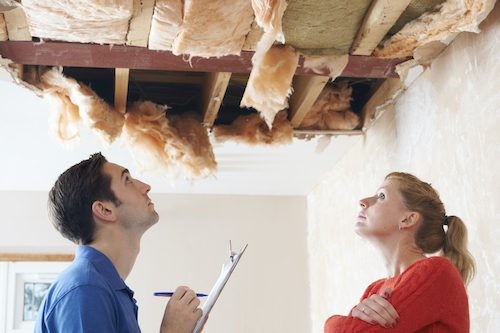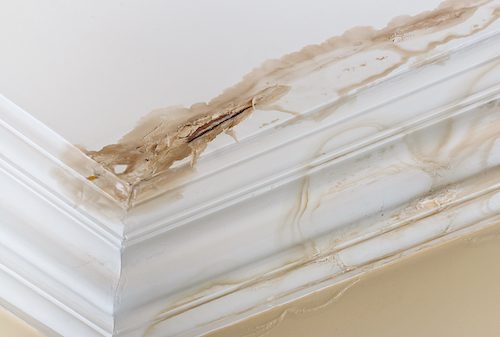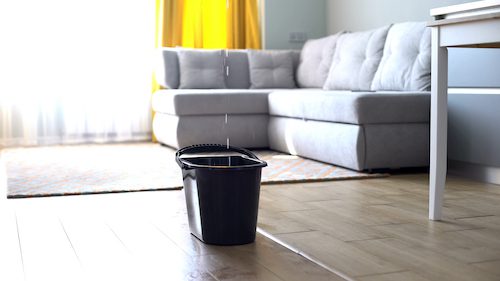As a homeowner, you know that a leaking roof can be a huge problem. Not only does any roof damage look unsightly on the outside of your home, but leaking roofs can lead to mold and other moisture-related problems, which could cause health hazards.
Any water that enters your property can cause damage to the ceiling, walls, and flooring of your home, frequently leading to more expensive repairs in the future if not addressed. It's never too late for professional help to fix leaky roofs!
If you have a leaking roof, it is essential to get it repaired as soon as possible before the damage becomes irreversible. This article will outline what you should look for when you find a leaking roof and the steps you should take to make sure the problem doesn't get worse!

A leaking roof can be a severe problem. It can cause water damage to the structure and lead to mold growth, leading to health hazards in your home, so it's essential to get it repaired as soon as possible.
The leaking problem could be the cause of an underlying issue, such as rot or mold problems on the inside of your home's walls and rafters. If you see any signs of water damage on your ceilings and walls or notice unusual odors coming from those areas, you should contact a roofing professional immediately.
The first thing you should do is determine if the leaking problem is in the roof itself or somewhere else in your home. Sometimes, if the leak appears on anything but the property's highest level, a burst pipe or leaking faucet can be the cause of the leak.
If you are sure the leaking roof is the problem, check the roof's exterior for any visible signs of damage. Be on the lookout for missing or broken shingles, cracks in the flashing, curling edges, and other problems that an expert should fix. If you suspect leaking but can't find it, the best thing to do is to call a professional roofer for help.

When you have a leaking roof, it's crucial to identify the source of the leak. This information will help you to decide what steps to take next.
One of the most common places for a roof leak is at the joints where the roofing material meets the wall. Other typical places for leaks are around chimneys and vents and at the eaves or gables.
If you can't find the source of the leak, it's a good idea to call in a professional to help you locate it. The experts will use special equipment to find the leak and fix it quickly.
Inside your attic, look for:
And, on the exterior, be on the lookout for:
The first thing to do is move any items that could be damaged by the leaking roof away from the water. It may seem like unnecessary damage if it's just raining. Still, water can cause severe damage to furniture and other belongings, so it's best to take precautions before you have a worse problem than leaking!
Remember: absorbent materials like couches and carpets can host mold growth, and electronics can cause electrocution.

A bucket placed under the leak and towels absorbing any extra can save your floors from water damage.
Garbage cans work wonderfully for particularly heavy leaks. Ideally, you use multiple containers to replace one while you empty the other.
Give your roofing company a call once the water doesn't pose a risk of spreading uncontrollably. They can help determine the extent of the issue and provide guidance for staying safe.
If the leaking roof results from an underlying problem such as wood rot, your roofer may recommend replacing part or all of your roof for better protection. However, these repairs could be significantly more expensive than just a simple asphalt shingle repair.
As long as leaking roofs are caught early, roofers can frequently fix them with minor repairs like replacing specific shingles, the best option for homeowners on a budget!
If you plan to file an insurance claim for leaking roofs, it's a good idea to take lots of photos documenting the damage. Get lots of shots from several angles and use close-ups if need be.
You can even take pictures of the leaking roof before you make repairs. This way, if there is disagreement about the cause of the leaking roof or whether it is leaking, you can show your insurer or property manager photo evidence of the problem.
If you think you have a leaking roof, look for water stains inside your home and roof damage outside. Be careful climbing onto the roof because a leaking roof could be caused by underlying structural damage.
Then, make sure the water doesn't cause more damage. Clear your belongings, collect the water, and call your roofer. If leaking roofs are caught early enough in their development cycle, minor fixes like replacing shingles or flashing can usually fix them up before they become a much bigger problem down the line!
Finally, take pictures for your insurance claim!
If you live in Houston or the surrounding suburbs, reach out to ER Contracting via our contact page! Our roofing experts know how to handle a leaking roof, and you can be sure that we will fix the problem so you can get your life back to the way it was before the leak appeared.